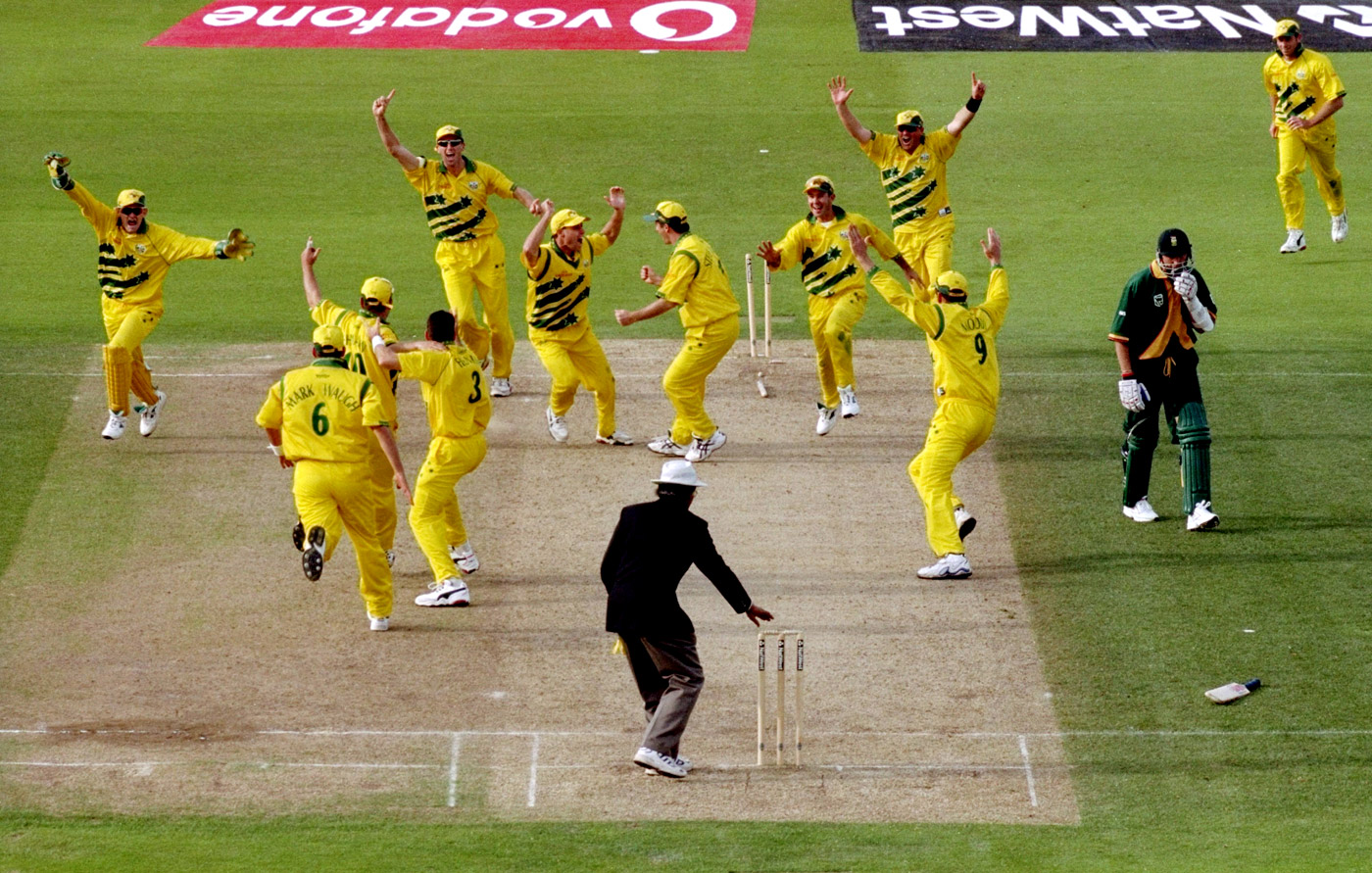


A One Day International (ODI) is a form of limited overs cricket, played between two teams with international status, in which each team faces a fixed number of overs, currently 50, with the game lasting up to 9 hours.The Cricket World Cup, generally held every four years, is played in this format. One Day International matches are also called Limited Overs Internationals (LOI), although this generic term may also refer to Twenty20 International matches. They are major matches and considered the highest standard of List A, limited-overs competition.
The international one day game is a late-twentieth-century development. The first ODI was played on 5 January 1971 between Australia and England at the Melbourne Cricket Ground.When the first three days of the third Test were washed out officials decided to abandon the match and, instead, play a one-off one day game consisting of 40 eight-ball overs per side. Australia won the game by 5 wickets. ODIs were played in white-coloured kits with a red-coloured ball.
In the late 1970s, Kerry Packer established the rival World Series Cricket competition, and it introduced many of the features of One Day International cricket that are now commonplace, including coloured uniforms, matches played at night under floodlights with a white ball and dark sight screens, and, for television broadcasts, multiple camera angles, effects microphones to capture sounds from the players on the pitch, and on-screen graphics. The first of the matches with coloured uniforms was the WSC Australians in wattle gold versus WSC West Indians in coral pink, played at VFL Park in Melbourne on 17 January 1979. This led not only to Packer's Channel 9 getting the TV rights to cricket in Australia but also led to players worldwide being paid to play, and becoming international professionals, no longer needing jobs outside cricket. Matches played with coloured kits and a white ball became more commonplace over time, and the use of white flannels and a red ball in ODIs ended in 2001.
In the main the laws of cricket apply. However, in ODIs, each team bats for a fixed number of overs. In the early days of ODI cricket, the number of overs was generally 60 overs per side, and matches were also played with 40, 45 or 55 overs per side, but now it has been uniformly fixed at 50 overs.
An ODI is contested by two teams of 11 players each.
The Captain of the side winning the toss chooses to either bat or bowl (field) first
The team batting first sets the target score in a single innings. The innings lasts until the batting side is "all out" (i.e., 10 of the 11 batting players are "out") or all of the first side's allotted overs are completed.
Each bowler is restricted to bowling a maximum of 10 overs (fewer in the case of rain-reduced matches and in any event generally no more than one fifth or 20% of the total overs per innings). Therefore, each team must comprise at least five competent bowlers (either dedicated bowlers or all-rounders).
The team batting second tries to score more than the target score in order to win the match. Similarly, the side bowling second tries to bowl out the second team or make them exhaust their overs before they reach the target score in order to win.
If the number of runs scored by both teams is equal when the second team loses all its wickets or exhausts all its overs, then the game is declared a tie (regardless of the number of wickets lost by either team).
Where a number of overs are lost, for example, due to inclement weather conditions, then the total number of overs may be reduced. In the early days of ODI cricket, the team with the better run rate won (see Average Run Rate method), but this favoured the second team. For the 1992 World Cup, an alternative method was used of simply omitting the first team's worst overs (see Most Productive Overs method), but that favoured the first team. Since the late 1990s, the target or result has usually been determined by the Duckworth-Lewis-Stern method (DLS, formerly known as the Duckworth–Lewis method),which is a method with statistical approach. It takes into consideration the fact that the wickets in hand plays a crucial role in pacing the run-rate and that a team with more wickets in hand can play way more aggressively than the team with fewer wickets in hand. When insufficient overs are played (usually 20 overs) to apply the DLS, a match is declared no result. Important one-day matches, particularly in the latter stages of major tournaments, may have two days set aside, such that a result can be achieved on the "reserve day" if the first day is washed out—either by playing a new game, or by resuming the match which was rain-interrupted.